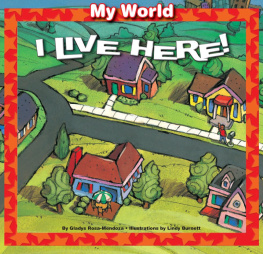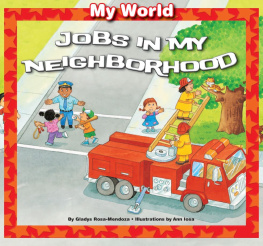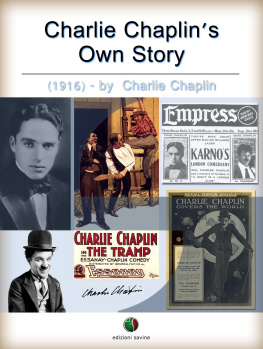Table of Contents
Titles in This Series
THE CHUMASH
THE ESSELEN
THE LUISEO
THE MIWOK
THE MODOC
THE MOHAVE
THE MONO
THE OHLONE
THE POMO
THE SHASTA
THE SHOSHONI
THE TONGVA
ROSEN / PowerKids Press
ISBN: 9781538324868
6-pack ISBN: 9781538324875
GRL: S
THE OHLONE
CHARLIE MENDOZA
Spotlight on the American Indians of California
OHLONE
THE
CHARLIE MENDOZA
New York
CHARLIE MENDOZA
OHLONE
THE
Spotlight on the American Indians of California
Published in 2018 by The Rosen Publishing Group, Inc.
29 East 21st Street, New York, NY 10010
Copyright 2018 by The Rosen Publishing Group, Inc.
All rights reserved. No part of this book may be reproduced in any form without permission in writing from the
publisher, except by a reviewer.
Editor: Elizabeth Krajnik
Book Design: Michael Flynn
Interior Layout: Tanya Dellaccio
Photo Credits: Cover, pp. 11, 13 Nativestock.com/Marilyn Angel Wynn/Nativestock/Getty Images;
p. 5 Bildagentur Zoonar GmbH/Shutterstock.com; p. 6 DAVID MCNEW/AFP/Getty Images; p. 7 Richard PJ Lambert/
Moment/Getty Images; p. 9 Luz-i/Shutterstock.com; p. 10 GUDKOV ANDREY/Shutterstock.com; p. 15 Marilyn Angel
Wynn/Nativestock/Getty Images; p. 17 Florilegius/SSPL/Getty Images; p. 19 moosehenderson/Shutterstock.com;
pp. 21, 27 DEA/G. DAGLI ORTI/De Agostini/Getty Images; pp. 22, 24 Courtesy of the Library of Congress; p. 23 https://
commons.wikimedia.org/wiki/File:Carlos_III_cazador.jpg; p. 25 Glenn W. Walker/Shutterstock.com; p. 29 Courtesy of
the New York Public Library Digital Collections.
Library of Congress Cataloging-in-Publication Data
Names: Mendoza, Charlie, 1982- author.
Title: The Ohlone / Charlie Mendoza.
Description: New York : PowerKids Press, 2018. | Series: Spotlight on the
American Indians of California | Includes index.
Identiers: LCCN 2017024172| ISBN 9781538324837 (library bound) | ISBN
9781538324868 (pbk.) | ISBN 9781538324875 (6 pack)
Subjects: LCSH: Ohlone Indians--California--History--Juvenile literature. |
Ohlone Indians--California--Social life and customs--Juvenile literature.
Classication: LCC E99.C8744 M46 2018 | DDC 979.4004/97--dc23
LC record available at https://lccn.loc.gov/2017024172
Manufactured in the United States of America
CPSIA Compliance Information: Batch #BW18PK For further information contact Rosen Publishing, New York, New York at 1-800-237-9932.
CONTENTS
OHLONE COUNTRY .....................
USING WHAT THEY HAD ................
GETTING CRAFTY ......................
MAKING MEALS ......................
LIVING TOGETHER .....................
OHLONE FASHION .....................
OHLONE TRADITIONS AND RELIGION.....
SOCIAL STRUCTURE ...................
EUROPEAN EXPLORATION .............
THE OHLONES AND THE
SPANISH MISSIONS ................
THE OHLONES JOIN THE MISSIONS .....
THE END OF THE MISSION ERA .........
THE OHLONE PEOPLE TODAY ...........
GLOSSARY ...........................
INDEX ...............................
PRIMARY SOURCE LIST ................
WEBSITES ...........................
Some scholars and American Indians believe the Ohlones are descendants of the
first American Indian groups to live in central California. They believe the Ohlones
have always lived in the areas where they were found by the Spaniards in 1769.
The lands between San Francisco Bay and Monterey
Bay in California were once home to a group of American
Indians known today as the Ohlone people. There, the
Ohlone people built an amazing culture that allowed
them to prosper for more than a thousand years.
Anthropologists and other experts estimate that
the Ohlones ancestors arrived in North America between
40,000 and 13,000 years ago. Over many thousands of
years, the ancestors of the Ohlones moved south into
what is now central California.
The Ohlones identified themselves not as members
of one big group but rather according to what community
they were from. The name Ohlone came into use in the
late 20th century. The origin of this name is unknown.
Previously, members of the Ohlone nations were called
Costanoans, a name given to them by Spanish settlers.
CHAPTER one
OHLONE COUNTRY
CHAPTER TWO
USING WHAT
THEY HAD
The Ohlones depended very heavily on what the
earth had to offer. They found abundant sources of food
in the plants that grew in the area. The Ohlones harvested
dozens of plants and plant items, including grasses and
nuts. Their lands also provided many kinds of game.
Every year, the Ohlone people burned the open
spaces that surrounded the trees in their communitys
forests. This action increased the amount of food that the
land would produce by making it easier for wild grasses
and flowers to grow. These plants produced seeds that
served as food for the Ohlones and many of the animals
they hunted.
Rocks were necessary for the creation of many of the
basic tools the Ohlones used every day. Wood from trees
was carved into hundreds of kinds of tools, such as bows,
spears, knife handles, and paddles.
The Ohlones depended on many different kinds of stones and minerals .
Salt, which was collected from salt ponds like the ones pictured here in San
Francisco, was an important item in everyones diet.
These Argentinian boleadoras look similar to the bolas the Ohlones
used to hunt. When thrown into the air, the bola twisted. It could
easily knock a bird out of the sky and trip a running animal.
CHAPTER THREE
GETTING CRAFTY
The Ohlones created jewelry and tools from raw
materials found around them. Nearly all American
Indian groups depended on stone as one of their most
important resources. The Ohlones ground harder types
of rocks into many different forms. They also created
arrowheads, knives, and other objects by chipping stone.
Parts from the animals the Ohlones hunted were
also used to create tools and jewelry. Bones were made
into beads, earrings, musical instruments, and tools.
Turtle shells and deer hooves were transformed into
rattles. Sinew, a kind of muscle, was removed from
the bodies of deer and combined with wood to make
powerful bows.
Plants provided another important source for raw
materials. The Ohlones frequently navigated the coastal
areas using reed canoes called tule balsas . Each canoe
was about 10 feet (3 m) long and 3 feet (1 m) wide.
CHAPTER FOUR
MAKING MEALS
The Ohlones prepared their meals in a number of
ways. They cooked many items by roasting them over
an open flame. Other foods were steamed or smoked
over slow-burning fires.
Some meals were prepared in pit ovens, which












